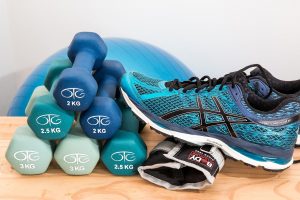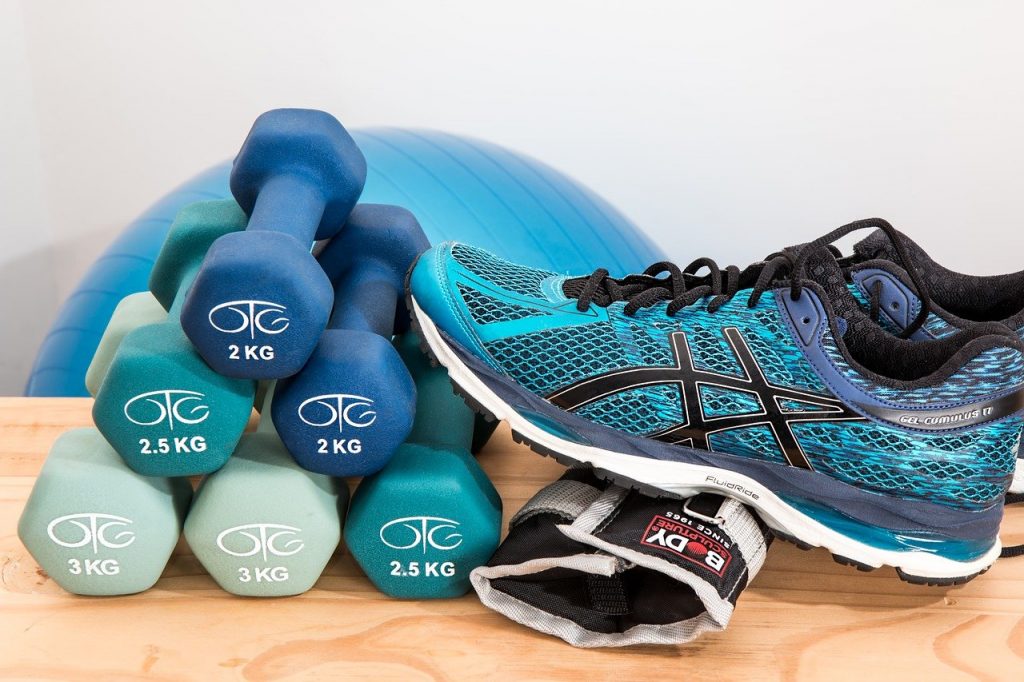
Written by Ellen Stack
Since the unexpected cancellation of training sessions, matches, and closure of pitches, the pandemic can cause athletes to think that all the long hours that they spent training, working on their nutrition and possibly gaining muscle mass has been cruelly taken away from them in the blink of an eye. While it is important to note that some muscle loss may occur, depending on how long your training is cancelled for, these nutrition tips can help you to maintain muscle mass with less training.
Adequate energy to maintain muscle mass.
Training hard and competing in any sport may put you at risk of inadequate energy consumption. This is quite often due to the belief that athletes who have a lower body composition will succeed better in any given sport. It has also become an assumption that when you have an injury or are not training as much that you need to drastically cut your energy intake. But, this misinformation can be harmful to athletes as with more energy restriction can come to a greater loss of muscle mass, higher risk of injury, poor injury recovery, negative effects on mental health, a higher risk of overall health consequences and can cause many negatives to performance when the athlete goes back to their high-intensity training routine.
Protein to help maintain muscle with less training.
If you are trying to reduce your overall energy intake, you will more than likely also be reducing your protein intake at a time where you want to increase it. While you might not be participating in as much exercise as normal, increasing your protein intake could help you maintain muscle mass. Evidence in this field suggests around 1.6g – 2.5g of protein per kg of body weight for athletes. Endurance athletes are generally recommended between 1.2-1.6 g/kg and for strength and power athletes between 1.4-2 g/kg (to get this amount multiply your weight in kg by the specific number previously mentioned).
Previous studies have shown that increasing protein recommendation to 1.6g/kg/ a day in woman did not help retain muscle mass and some recent research has also shown that endurance athletes could need between 1.8 – 2.6g protein depending on the intensity and frequency of their session.
Therefore, my recommendation would be to aim between 1.8-2.6g of protein per day when trying to preserve muscle mass with less training.
Protein Sources are also important when it comes to maintaining muscle mass
Essential amino acids are the building blocks of protein and they are necessary to stimulate MPS (muscle protein synthesis) which in easier terms is the growth and repair of our muscles. Food provides us with essential amino acids but one essential amino acid named ‘leucine’ is particularly important when it comes to muscle building. It is said to be the ‘king’ of all the other amino acids when it comes to MPS. While greater doses of leucine have been shown to independently stimulate increases in protein synthesis, 0.7-3g of leucine is what we need per day. A balanced consumption of the essential amino acids (EAAs) promotes the greatest increases. The take-home message here is rather than opting for large doses of leucine, to have consistent intakes of protein (essential amino acids) throughout the day. Leucine is predominantly found in animal and dairy products or choosing plant protein such as tofu and soy which boast a high leucine content.
Protein and Nutrient Timing:
You will optimize your MPS throughout the day if you spread out your protein evenly. You do not want to eat a bolus of protein in one specific meal as your body will only be able to tolerate a specific amount at one time, with no evidence to support eating extremely large quantities of protein at each meal will help with muscle adaptations.
It is recommended to aim for approximately 20-25g of protein per meal, although this can go into the upper limits of 20-40g depending on the athlete’s training load and intensity and frequency of sessions. It is best to eat 3 main meals of protein per day with 2 high protein snacks if needed.
What if I am struggling to meet my protein requirement?
If you include a portion of fish, chicken, turkey, low-fat cheese, eggs, Quorn, soya beans, lentils or Greek yoghurt over 4-5 meals/snacks, you will likely be hitting your protein target. Protein powders can also be used and are very convenient and easy to use. Top tip though you need to work out how much protein you are currently getting in your diet, as your body is only able to absorb so much protein so that one scoop or two scoops of protein powder that you are taking every day could be costing you very expensive urine.
* It is worth noting that the research used for this article primarily came from research looking at injured athletes or athletes who were immobile. Therefore, this article is used in the understanding that most athletes are participating in some sort of exercise at home and the above information might be slightly lower than the recommendation for an injured athlete.
Other tips to help with limited training:
– Sleep: Try to aim for 7-9 hours sleep per night, MPS happens when we are asleep so making sure that you are getting the correct amount of sleep and rest will be beneficial in helping to maintain muscle mass.
– Stay hydrated: Track the colour of your urine with a urine chart to make sure that you are staying hydrated throughout your day.
– Supplement with Vitamin D if you are reading this in Ireland or the United Kingdom between the months of October-March, it will help with coughs, colds, and illness.
– Reduce your stress. Try to incorporate some mindfulness, journaling, reading a chapter of a book a day, yoga, breathing exercises, drawing or colouring.
– Learn how to cook. Try a few simple recipes that you will be able to transfer over when you do get back training, even if this is as simple as a no-cook protein ball that you can have as a snack on the go.
References:
Bandegan, A., Courtney-Martin, G., Rafii, M., Pencharz, P.B. and Lemon, P.W., 2019. Indicator amino acid oxidation protein requirement estimate in endurance-trained men 24 h postexercise exceeds both the EAR and current athlete guidelines. American Journal of Physiology-Endocrinology and Metabolism, 316(5), pp.E741-E748.
Kato, H., Suzuki, K., Bannai, M. and Moore, D.R., 2016. Protein requirements are elevated in endurance athletes after exercise as determined by the indicator amino acid oxidation method. PloS one, 11(6), p.e0157406.
Mamerow, M.M., Mettler, J.A., English, K.L., Casperson, S.L., Arentson-Lantz, E., Sheffield-Moore, M., Layman, D.K. and Paddon-Jones, D., 2014. Dietary protein distribution positively influences 24-h muscle protein synthesis in healthy adults. The Journal of nutrition, 144(6), pp.876-880.
Schoenfeld, B.J. and Aragon, A.A., 2018. How much protein can the body use in a single meal for muscle-building? Implications for daily protein distribution. Journal of the International Society of Sports Nutrition, 15(1), pp.1-6.
Thomas, D.T., Erdman, K.A. and Burke, L.M., 2016. Position of the Academy of Nutrition and Dietetics, Dietitians of Canada, and the American College of Sports Medicine: nutrition and athletic performance. Journal of the Academy of Nutrition and Dietetics, 116(3), pp.501-528.
Tipton, K.D., 2015. Nutritional support for exercise-induced injuries. Sports Medicine, 45(1), pp.93-104.
